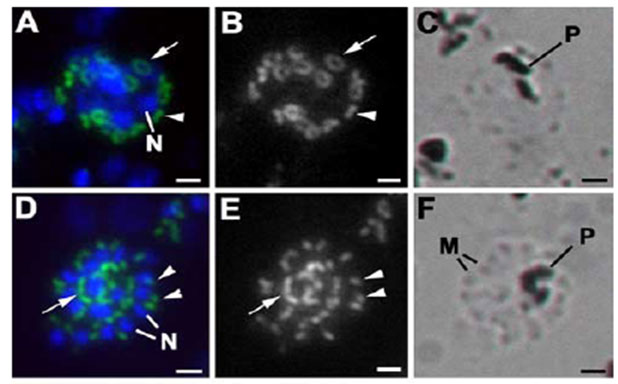MORN1 in schizogony of Plasmodium. Images of infected erythrocytes immunostained with anti-MORN1 (green) and the nuclei counterstain showing the DAPI-positive nucleus (blue) (A and D). Panels B and E present the green channel in gray, increasing the clarity of the MORN1-positive staining. Panels C and F represent the transmitted light image. (A to C) Infected erythrocyte illustrating a late stage in schizogony in which 16 individual MORN1-positive rings (tangential appearance [arrows]) or plaques (longitudinal orientation [arrowheads]), representing the free ends of the cone-shaped IMCs, can be identified. (D to F) Infected erythrocyte containing a mature schizont showing the DAPI staining of nuclei (N) of the daughters with strong posterior MORN1 staining (arrows) and a smaller, more apical MORN1-positive structure, possibly representing the nuclear pole (arrowheads). The transmitted light images illustrate the dark-appearing hemozoin pigment (P) in panels C and F. In panel F, individual merozoites (M) can be identified. Bars = 1 mm. MORN1 localizes to the merozoite budding sites on Plasmodium schizonts.
Ferguson DJ, Sahoo N, Pinches RA, Bumstead JM, Tomley FM, Gubbels MJ. MORN1 has a conserved role in asexual and sexual development across the apicomplexa. Eukaryot Cell. 2008 7:698-711.
